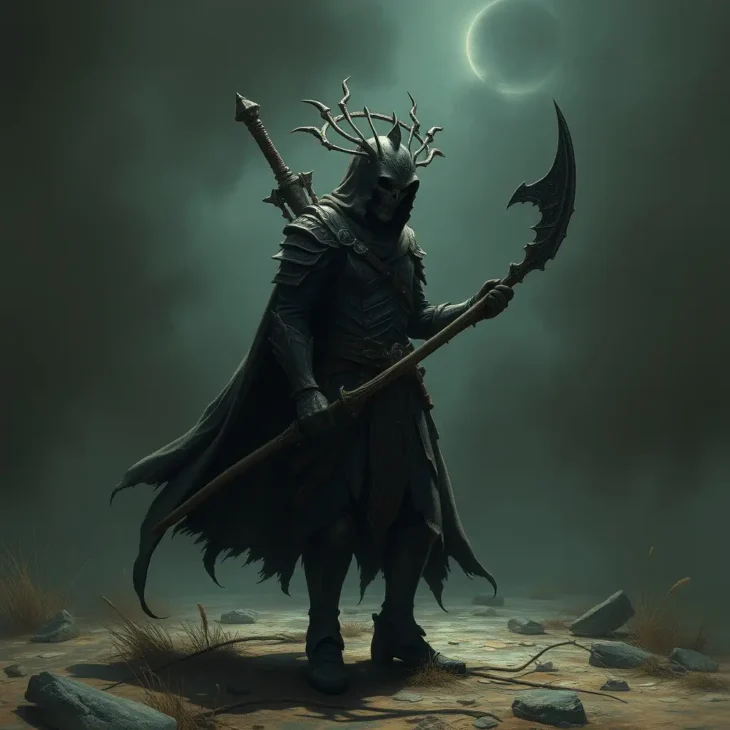How to Keep Bhoot Away: Indian Folklore’s Protection

As the sun sets, the air grows cold. Shadows get longer, and night whispers hint at the unknown. For years, people in the Indian subcontinent have known about bhootas. These spirits, often the souls of the dead, can both fascinate and frighten.
Places like cremation grounds, old buildings, and royal homes are said to be haunted. The belief in indian folklore’s powerful protective symbols & rituals has lasted. Bhootas can change shape and don’t cast shadows, as old stories tell us. Knowing about these ghostly entities is key to keeping them away.
What are Bhootas?
Etymology and Cultural Significance
The word “bhoota” comes from the Sanskrit bhūta, which means “past” and “being”. This word has similar sounds in many languages, showing how important these spirits are in Indian culture.
In languages like Hindustani, Punjabi, and Bengali, bhootas are big in everyday talk. For example, “ridden by the bhoot of something” means you really love it. “Dismounting a bhoot” means you’ve overcome a false idea. This shows how deeply bhootas are woven into local cultures.
But bhootas aren’t just in Indian languages. They also appear in Southeast Asian tongues like Javanese as “buta” and Malay as a type of jinn. This wide reach shows how these spirits are valued across many cultures.
Cultural Significance
| Language | Term for “Bhoota” | |
|---|---|---|
| Hindustani | Bhoot | Widely used in idiomatic expressions |
| Punjabi | Bhoot | Widely used in idiomatic expressions |
| Kashmiri | Bhoot | Widely used in idiomatic expressions |
| Bengali | Bhoot | Widely used in idiomatic expressions |
| Sindhi | Bhoot | Widely used in idiomatic expressions |
| Javanese | Buta | Enters Southeast Asian folklore as a supernatural entity |
| Malay | Jinn-like creature | Enters Southeast Asian folklore as a supernatural entity |
Characteristics of Bhootas
Bhootas are supernatural beings with amazing abilities. They can change shape into different animals. But, their ghostly nature is clear from their backwards-facing feet.
Bhootas avoid touching the ground and float above it. They don’t have a shadow, making them even more mysterious. When they speak, their voice has a unique nasal quality.
Some trees and white clothes are linked to bhootas. They are said to hide in trees or wear all white. These traits are found in many ghost stories and legends about bhootas.
| Characteristic | Description |
|---|---|
| Shape-shifting abilities | Bhootas can transform into various animal forms at will, though they are most often seen in human shape. |
| Physical features | Bhootas have backwards-facing feet, cast no shadows, and speak with a distinct nasal twang. |
| Avoidance of touching the ground | Bhootas go to great lengths to avoid direct contact with the ground, preferring to float just above the surface. |
| Association with trees and clothing | Bhootas are often associated with certain trees and are said to appear dressed in all white. |
The unique traits of bhootas have captured the hearts of many. They inspire ghost stories and folklore that still fascinate people today.
Thwarting Bhootas: Traditional Protection Methods
In Indian folklore, many traditional methods are used to fight off bhootas, or evil spirits. People use special objects, call on sacred figures, and perform unique rituals for protection.
Sacred Objects and Rituals
Iron, steel, or water objects are believed to keep bhootas away. The smell of burnt turmeric is also said to repel them. Calling on gods like Ganesha, Shiva, or Durga is thought to keep them at bay too.
In Hinduism and other Dharmic religions, the soul can’t be destroyed. So, exorcists do an atma-shanti ritual. This ritual is to make the bhoota happy by giving it what it wants, stopping it from haunting.
The atma-shanti ritual is seen as a strong way to calm a restless spirit. It helps it move on to the next life peacefully. Knowing about objects that repel bhootas and rituals to ward off bhootas helps people deal with Indian folklore and its role of holy figures and deities in protection.
How to Keep Bhoot Away: Indian Folklore’s Powerful Protective Symbols & Rituals
Indian folklore has many symbols and rituals to keep bhootas away. These include iron, steel, and turmeric and prayers to gods. These methods are rooted in the region’s spiritual beliefs.
The “atma-shanti” ceremony is one such ritual. It calms the soul of a bhoota. By using these methods, you can protect your home and family from bhootas.
Indian mythology and spirituality offer many tools to keep bhootas away. Black Tourmaline, Hematite, Tiger’s Eye, Black Obsidian, Citrine, Kyanite (blue), Smokey Quartz, and Selenite are some of these powerful symbols. They help create a spiritual shield against bhootas.
Indian folklore also talks about protective rituals and practices. These include grounding, energy shielding, and chanting bhoot badha mantras. These mantras are believed to defend against bhootas.
By learning from Indian folklore, you can keep bhootas away and feel spiritually secure. Discover the symbols, rituals, and practices that have protected people for generations.
To effectively protect yourself, it’s important to understand these traditions. With the right knowledge and effort, you can use Indian folklore to keep bhootas away. This will help you live in a safe and harmonious environment.
Haunted Places and Ghost Stories
The Indian subcontinent is filled with allegedly haunted locations. These include cremation grounds, old buildings, royal mansions, and dense forests. People believe these places are home to bhootas and other supernatural beings. This has created a rich collection of ghost stories involving bhootas that are part of the region’s folklore.
Many cultures believe in spirits and supernatural beings. In India, people used to cremate bodies and burn turmeric to keep spirits away. They also wore protective amulets.
Today, ghost hunters use science to look for paranormal activity. Books like Deepa Anappara’s “Djinn Patrol on the Purple Line” explore the dark side of urban India. They show how these beliefs are still important today.
| Haunted Location | Reported Paranormal Activity | Cultural Beliefs |
|---|---|---|
| Bhangarh Fort, Rajasthan | Disembodied voices, unexplained lights, and the feeling of being watched | Cursed by a powerful sorcerer, the fort is believed to be inhabited by restless spirits |
| Kuldhara, Rajasthan | Unexplained sounds, ghostly apparitions, and the feeling of being followed | The abandoned village is said to be haunted by the spirits of its former inhabitants, who were forced to flee in the 19th century |
| Lambi Dehar Mines, Uttarakhand | Ghostly figures, unexplained movements, and a sense of unease | The mines, which were the site of a tragic mining accident, are believed to be haunted by the souls of those who perished there |
Bhootas in Popular Culture
The world of bhootas, or ghosts, is a big part of Indian subcontinent’s culture. They are seen in movies, TV shows, and books. These supernatural beings have caught the attention of many in South Asia.
Films, TV Shows, and Literature
In Pakistan, “Woh Kya Hai” explores the mysteries of bhootas. In India, “Aahat” tells chilling stories of the supernatural. Bengali culture also has a lot of stories about these ghostly beings.
Bhootas are a big part of South Asian culture. Stories like “Sheekol Buri” in Bengal and “Damori” conjured by tantriks show their lasting appeal. They add to the cultural identity of the Indian subcontinent.
Conclusion
Indian folklore is full of powerful symbols and rituals to keep bhootas away. Items like iron, steel, and turmeric are sacred. They are used in rituals to ward off evil spirits.
These practices come from deep spiritual beliefs in the region. The “atma-shanti” ceremony is a key example. It aims to calm restless souls and keep peace.
Knowing about bhootas is key to protecting your home and family. Indian mythology and spirituality offer many ways to keep them away. This shows how important these beings are in South Asian culture.
Learning how to keep bhootas away is still important today. It shows the lasting value of these old practices. By using the wisdom of Indian folklore, you can defend against evil forces.





